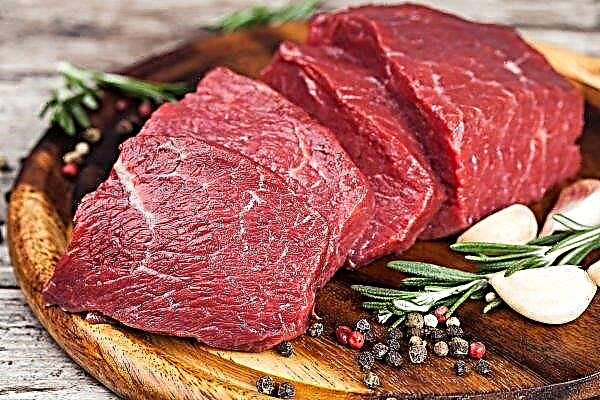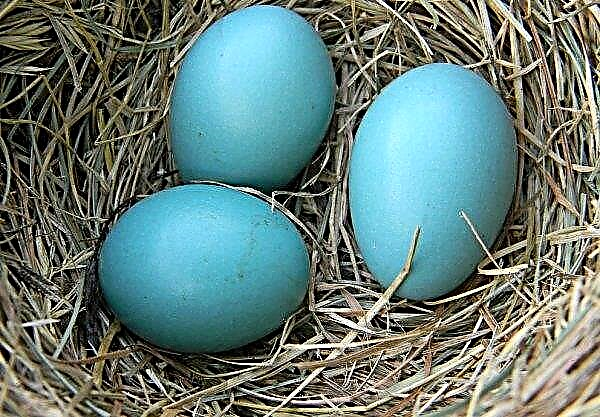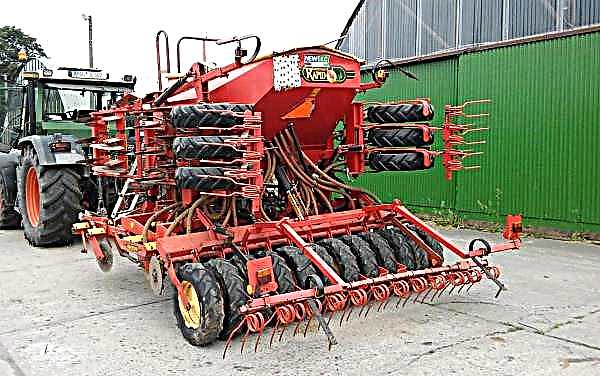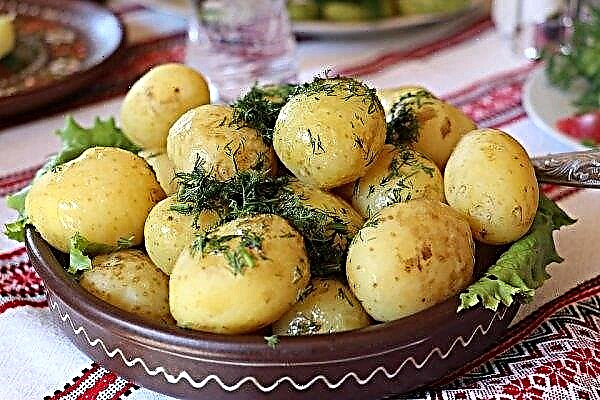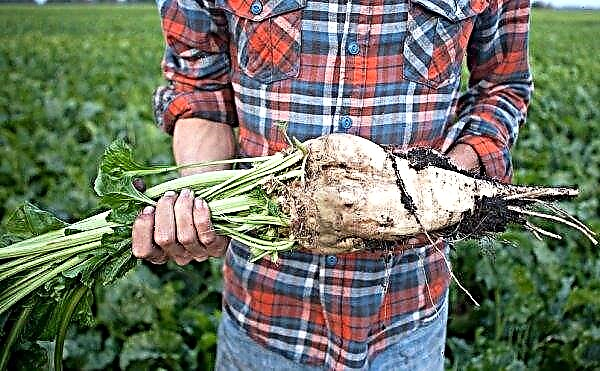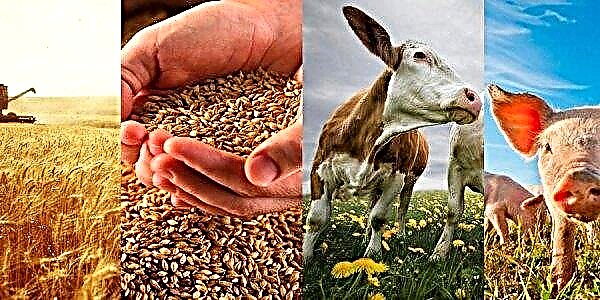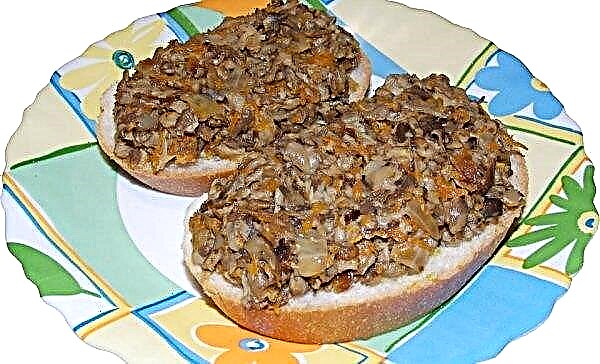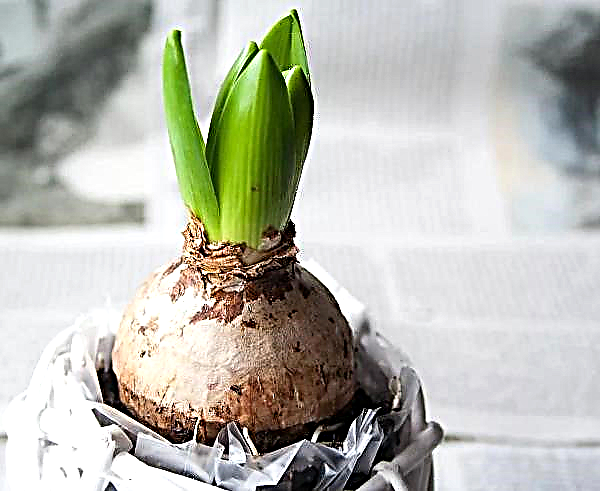Celery is a herbaceous plant used by humans in the food and cosmetic industries. When to properly collect, how to store and use the crop of root celery, read below.
Description and characteristics of celery
Celery is a biennial herb that belongs to the Umbrella family. Depending on the variety, the plant can grow from 30 cm to 1 m in height.
Did you know? Celery contains pheromone androsterone, which is secreted by the sweat glands of men to attract the opposite sex.
Only 3 types of celery are known:
- root - forms a rounded root and has a well-developed leaf rosette;
- stem - the root crop is underdeveloped;
- sheet - differs in thick shoots, in the first year of growth forms leaf plates and root crops, in the second year it blooms.

The root crop of the plant has a spherical shape, flattened from the sides, its flesh is loose, not hardened. Color - gray or brown. Multiple root processes depart from the root crop. The leaf plates are green, glossy on the top, and matte on the back. Flowering begins in July, and the seeds ripen by September.
The culture belongs to frost-resistant and moisture-loving plants, therefore, it can be grown even in cold and humid climatic conditions of the northern regions.
When to dig up celery root
Harvesting fruits is a very important matter, when properly carried out, their preparation for transportation and storage is ensured.
Important! You should not rush to harvest root crops, because the longer they stay in the soil, the more nutrients they gain and increase in size.
It is necessary to dig out celery root crops after full ripening, which can be determined by some signs - we will familiarize ourselves with them below.
Signs of ripening culture
A sign of ripening of celery root is yellowing and drying of the aerial parts of the plant.
Vegetable Harvesting Dates
Harvesting vegetables should be carried out according to dates that depend on the variety and weather conditions of the growing region. Harvesting time should not occur during the period of frost, otherwise the vegetable will deteriorate quickly, so usually harvesting is carried out from September to early November, depending on weather conditions.
Video: Harvesting and storing root celery
Ripening dates in various regions of Russia
Depending on the climatic characteristics of the region, the gardener chooses a variety of celery to get a good harvest, which will have time to ripen and will be stored for a long time. For the northern regions of Russia, with their cold climate and frosty winters, early varieties of vegetables for planting are selected, and the crop is harvested until mid-September.
For the Moscow Region, it is better to choose medium-early varieties of culture, the ripening of which will be 140–150 days, the collection period for this is around the beginning of October. Late ripening varieties (about 200 days) are suitable for a warm southern climate - they are harvested in late October.
Harvest Tools
In order not to harm the root crop when digging a crop, it is necessary to choose the right tools.
Important! Harvesting by pulling out is suitable only for one-time use of the vegetable, because during such harvesting roots can be damaged, which is unacceptable when storing food.
The best celery harvesting tools are:
- pitchfork;
- flat shovel.

Selection and quality control of fruits
The celery fruit must be solid, without unnecessary branches and roots, small defects in shape and small cracks that are healed are permissible.
The root crop should not contain diaper rash, rot and signs of the presence of pests.
Fresh storage
Celery roots in fresh form are stored no more than a month.
In fridge
To store the product in the refrigerator, you must do the following:
- Wash vegetables under running water.
- Dry them and pack in polyethylene.
- Place in the vegetable compartment in the refrigerator at a temperature of + 3 ° C to + 6 ° C.
Root crops can be frozen, but then they can not be eaten raw. For freezing, they are washed, dried, cut into pieces, and then placed in a food bag.

In the cellar, basement, on the balcony
To keep the product as long as possible, it is placed in a cool, damp room:
- on the balcony;
- in the cellar;
- in the basement.
For storage, you need to take a wooden box, which is covered with moist sand to the top. Dig vegetables in the sand and cover the top of the drawer with cling film to maintain the level of moisture contained. The film must be removed once every two days to prevent decay of the fruit from a lack of oxygen.
Celery is useful for human health, because it contains a maximum of vitamins and minerals, which are important for the whole body, therefore it is worthwhile to take responsibility for the rules of its collection and storage.


